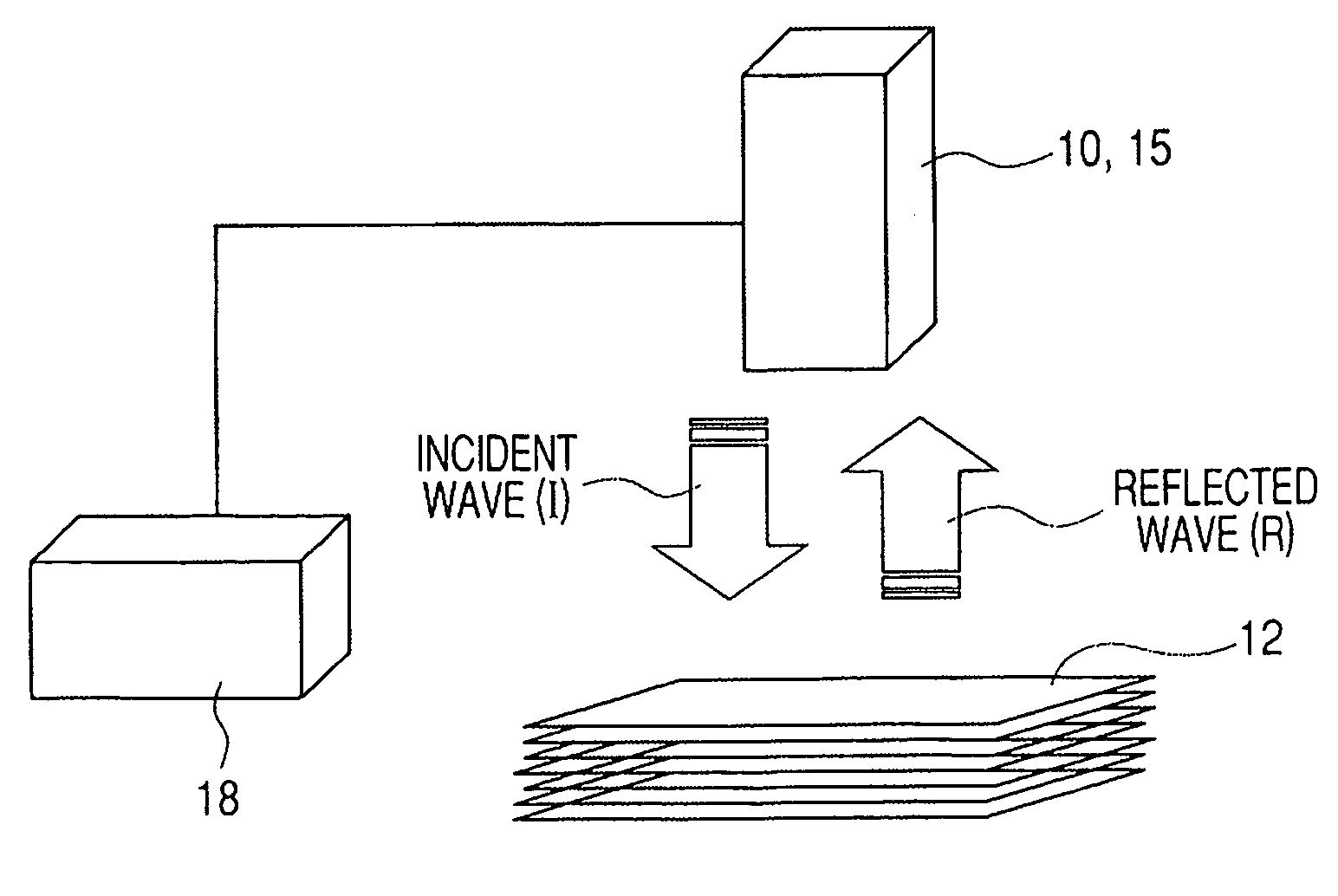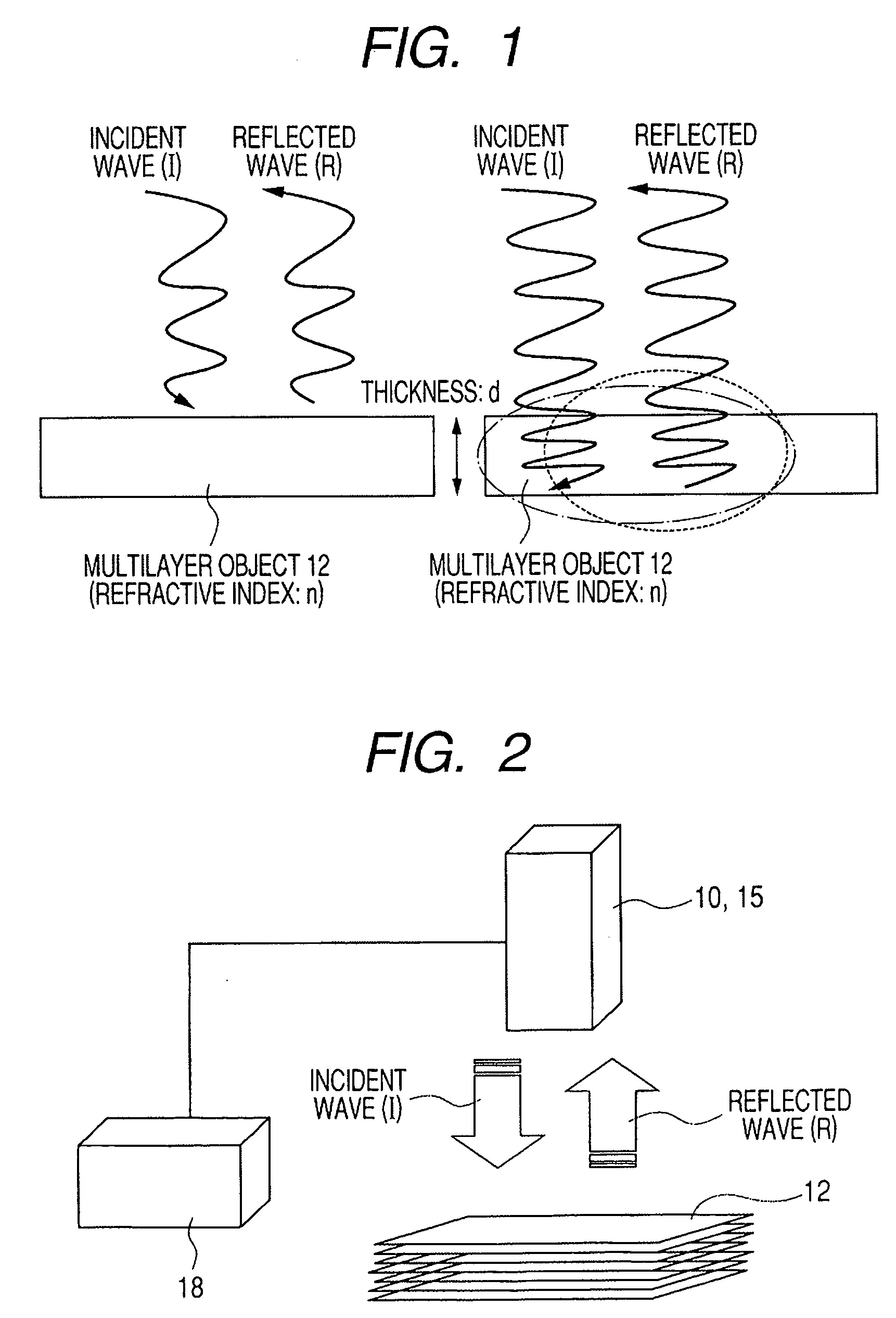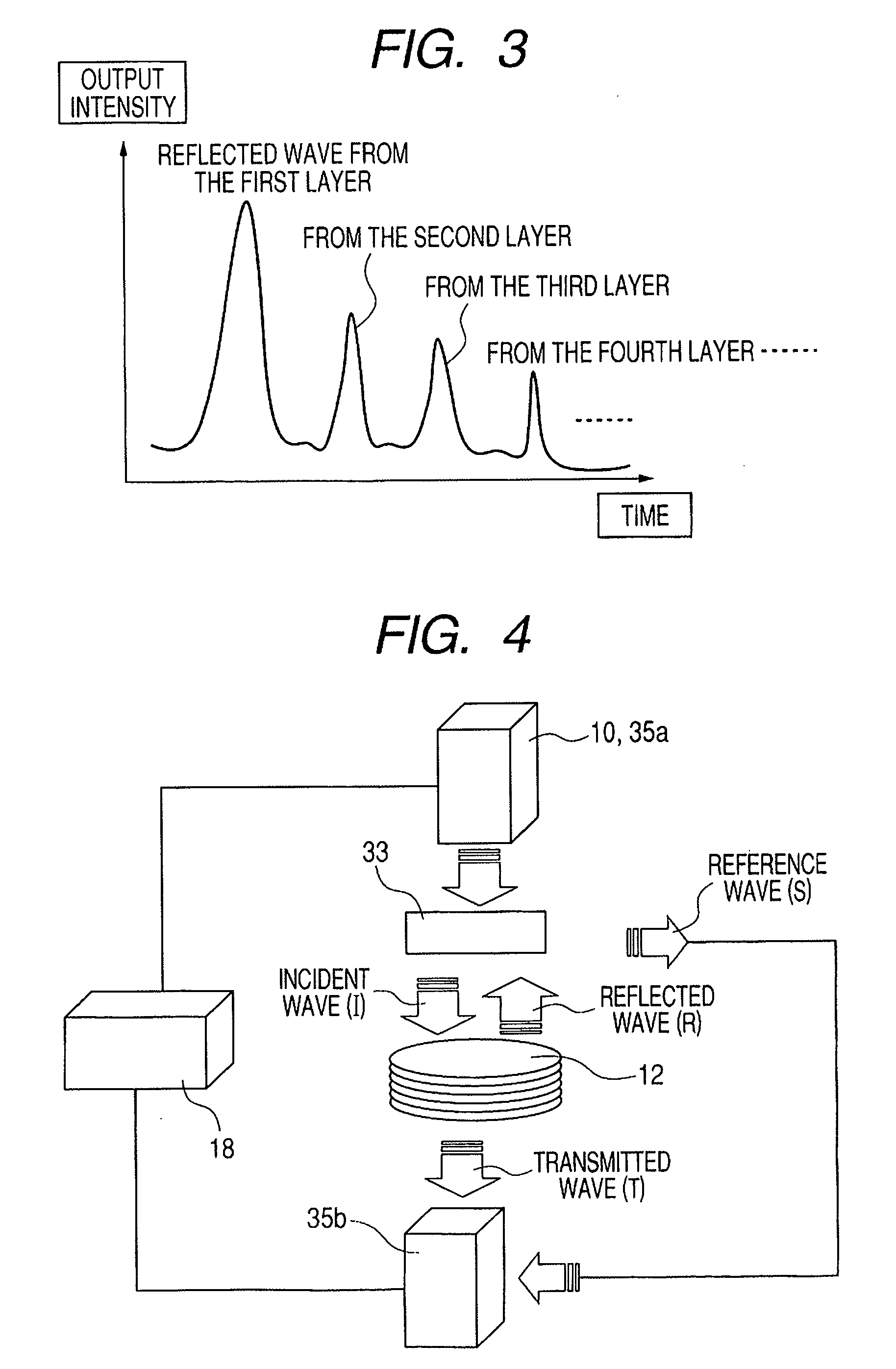System and mehod for counting number of layers of multilayer object by means of electromagnetic wave
a multi-layer object and electromagnetic wave technology, applied in the field of systems, can solve the problems of inability to accurately count affecting the performance of the system, etc., and achieve the effect of allowing the accurate counting of the number of layers of a multi-layer obj
- Summary
- Abstract
- Description
- Claims
- Application Information
AI Technical Summary
Benefits of technology
Problems solved by technology
Method used
Image
Examples
embodiment 1
[0034]FIG. 2 is a schematic illustration of the first embodiment of system for counting the number of layers of a multilayer object according to the invention, using the reflection method, showing the configuration thereof. A single pulse electromagnetic wave (incident wave (I)) is emitted from an oscillator 10 to strike at least the top surface or the bottom surface of a multilayer object 12 that is in a state where two or more than two layers are laid one on the other and the reflected waves (R) generated at the interfaces of the intermediate layers of the multilayer object 12 are received by an optical receiver 15. The received voltage signals of the reflected waves (R) that are received by the optical receiver 15 are delivered to processing unit 18, which processing unit 18 operates to count the number of the received voltage signals.
[0035] A specific example of counting the number of sheets of paper that are laid one on the other in air will be discussed below. While both the ...
embodiment 2
[0040]FIG. 4 is a schematic illustration of the second embodiment of system for counting the number of layers of a multilayer object, using both the reflection method and the transmission method, showing the configuration thereof. An electromagnetic wave emitted from an oscillator 10 is divided into an electromagnetic pulse (incident wave (I)) adapted to strike at least the top surface or the bottom surface of a multilayer object 12 that is in a state where two or more than two layers are laid one on the other and an electromagnetic wave (reference wave (S)) that is directly propagated to second optical receiver 35b without entering the multilayer object 12. The incident wave (I) is partly reflected by the interfaces of the intermediate layers of the multilayer object 12 (to produce reflected waves (R)) and received by first optical receiver 35a. The received voltage signals generated by the reflected waves (R) received by the first optical receiver 35a are delivered to processing u...
embodiment 3
[0052]FIG. 7 is a schematic illustration of a system for counting the number of layers of a multilayer object using a propagation path with the reflection method described above by referring to the first embodiment, showing the configuration thereof. This embodiment differs from the first embodiment only in that the electromagnetic wave emitted from the oscillator 10 is partly or entirely made to be propagated to the optical receiver 15 by way of a propagation path. Otherwise, this embodiment is identical with the first embodiment.
[0053] A specific example of counting the number of sheets of paper that are laid one on the other in air will be discussed below. In this example using the above described reflection method, both the electromagnetic wave that is propagated through air to strike the sheets of paper and the electromagnetic wave that is propagated through air from the surface of the sheets of paper at the side of the optical receiver 15 to the optical receiver 15 are propag...
PUM
| Property | Measurement | Unit |
|---|---|---|
| thickness | aaaaa | aaaaa |
| reflection | aaaaa | aaaaa |
| phase | aaaaa | aaaaa |
Abstract
Description
Claims
Application Information
 Login to View More
Login to View More - R&D
- Intellectual Property
- Life Sciences
- Materials
- Tech Scout
- Unparalleled Data Quality
- Higher Quality Content
- 60% Fewer Hallucinations
Browse by: Latest US Patents, China's latest patents, Technical Efficacy Thesaurus, Application Domain, Technology Topic, Popular Technical Reports.
© 2025 PatSnap. All rights reserved.Legal|Privacy policy|Modern Slavery Act Transparency Statement|Sitemap|About US| Contact US: help@patsnap.com



